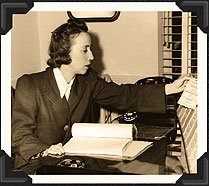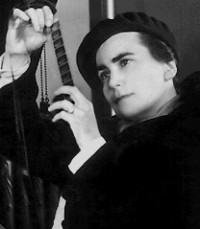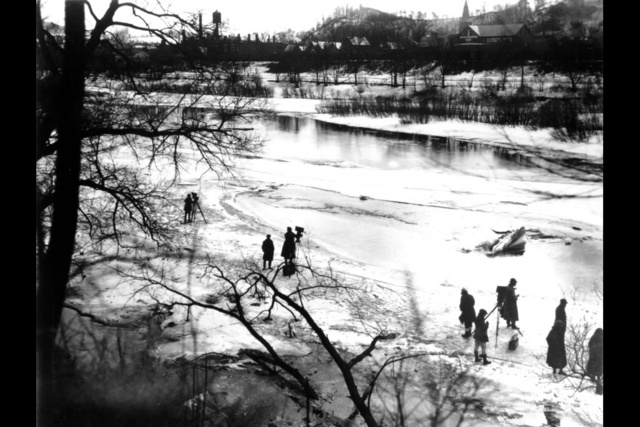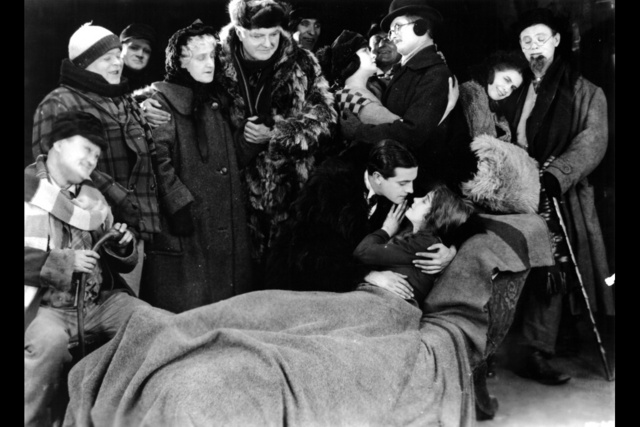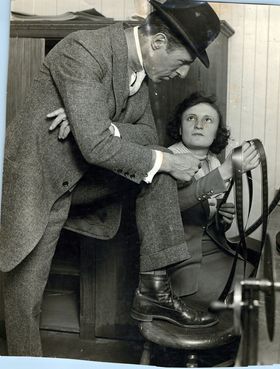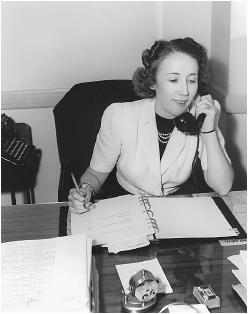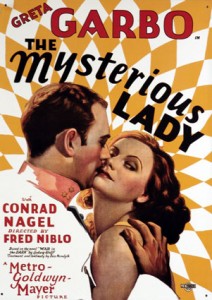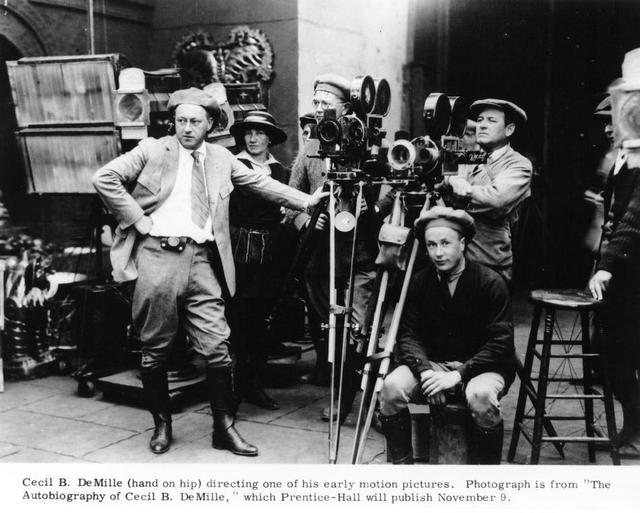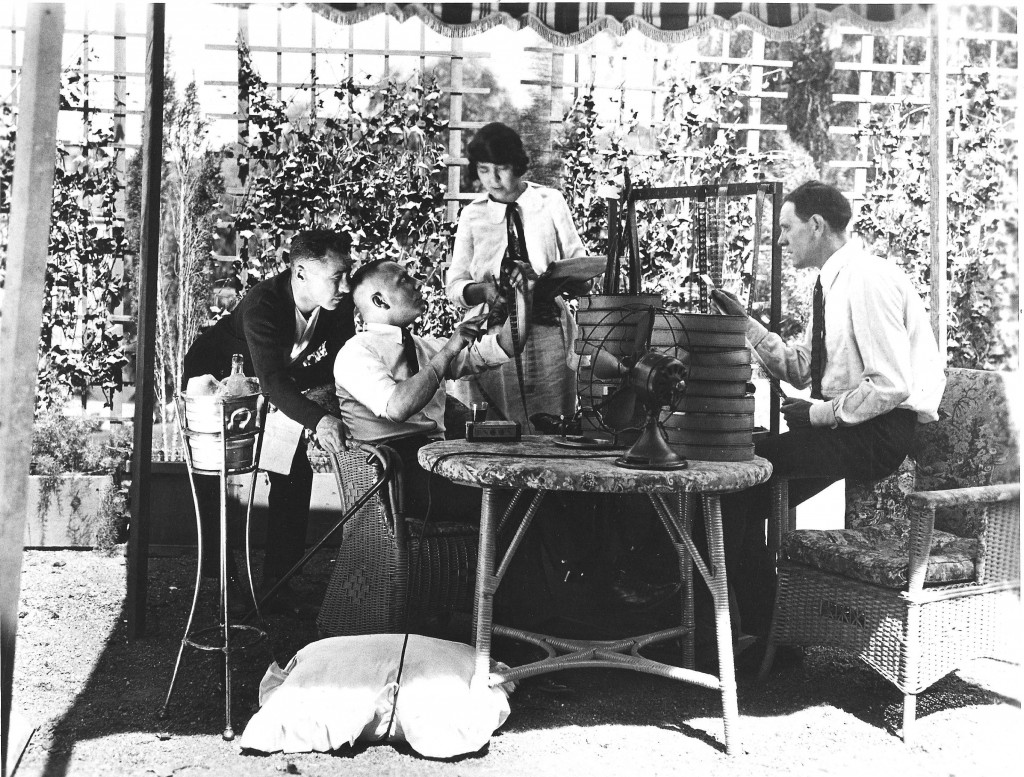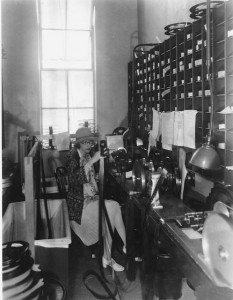The finishing of pictures—the cutting and titling, has been, until quite lately, the most neglected branch of motion picture production. Nobody, with one or two conspicuous exceptions, paid any attention to it. It was a case of let Jakey cut the picture and Lizzie, the Typewriter, title it.
— Frank Woods, Moving Picture World (1917)
In 1926, the Los Angeles Times informed readers that “one of the most important positions in the motion-picture industry is held almost entirely by women” whose job it was to assemble “thousands of feet of film so that it tells an interesting story in the most straightforward manner” (B7). Assembling reels and cutting negatives was tedious work that often fell to young working-class women. However, out of the ranks of these film joiners and negative cutters emerged a handful of women who would help to develop the editing techniques that would become the hallmark of Hollywood’s visual style.
It is difficult to uncover much information about these early film editors. Some, like Dorothy Arzner, who cut Rudolph Valentino’s Blood and Sand (1922), moved up from editing to play a more visible role in Hollywood. But for the most part, the women who cut film in the silent era remained unacknowledged in film credits or the trade press. Their work was considered to be merely technical rather than creative, especially during a period when many directors oversaw the editing of their own films. At least once, however, the case was made for the special aptitude women had for editing, as when Florence Osborne wrote in a 1925 Motion Picture Magazine article:
Among the greatest ‘cutters’ and film editors are women. They are quick and resourceful. They are also ingenious in their work and usually have a strong sense of what the public wants to see. They can sit in a stuffy cutting-room and see themselves looking at the picture before an audience (665).
Film credits that appeared on the 35mm prints themselves tell us very little about the role women played in editing early films, and what they do tell is often at odds with other sources. Jeanne Spencer, for instance, was cited as the editor of The Devil’s Passkey (1920), but according to the American Film Institute Online Catalog, later sources identify her as an assistant director on the film. She is credited as a “film cutter” on The Amateur Gentleman (1926) and as a “film editor” on Resurrection (1927). However, according to the Los Angeles Times, in 1927 director Edwin Carewe “personally edited Resurrection, assisted by Jean Spencer,” who is identified as “the young lady who was with von Stroheim in Foolish Wives and Greed and who cut The Iron Horse” (C17). Jeanne Spencer, however, is not listed in the American Film Institute online as either editor or assistant director on any of these films.
When an Editor was a Cutter
To further complicate matters, the term “editor” was used inconsistently during the silent era. The word “editor” might be used to describe the person who cut a film, or the one whose role it was to shape written stories into coherent, dramatic films. For instance, twenty-four-year-old Winifred Dunn became an editor for Metro in 1923, but she was only minimally involved in cutting film. Instead, she culled story proposals, reshaped novels and plays into film scripts and wrote intertitles. Unlike film cutters, the women who worked as “scenario editors”— Dunn, Hettie Gray Baker, and Katherine Hilliker—were often college educated and had worked in journalism or theatre before arriving in Hollywood. They also figured more prominently in publicity about the budding film industry than did film cutters.
The focus here is on the women who worked as film editors in the contemporary definition of the job and who, at the time, were commonly referred to as film “cutters” in the silent era. These are the women who screened dailies with directors and producers to help decide what footage should be used, what cut, and whether additional footage needed to be shot. They attended test screenings to determine where a film’s pacing flagged, where the drama might be heightened with a close-up, or where a sequence needed to be cut. One of the best sources of information about these women is the Academy of Motion Picture Arts and Sciences interview with Margaret Booth, who began her career as a negative cutter for D. W. Griffith in 1915 and became one of Hollywood’s most influential cutters. Booth’s Academy interview includes detailed information about her years working for D. W. Griffith, Louis B. Mayer, and the Metro-Goldwyn-Mayer studio.
Margaret Booth: From D.W. Griffith to Irving Thalberg
Margaret Booth began work at D. W. Griffith’s Los Angeles studio shortly after graduating from Los Angeles High School in 1915. Her brother, Elmer Booth, had been a Broadway performer who acted in a number of Griffith’s films for the Reliance Company. When Elmer died in a car crash in 1915, Griffith gave a moving eulogy at the funeral, as Moving Picture World reported (289). Elmer’s sister Margaret was then urged to come to work for the studio. There, the only jobs available to an inexperienced, female high-school graduate were in the “laboratory,” where Booth soon began work as a film “joiner,” assembling two-hundred-foot rolls of film into thousand-foot reels. “[All] of the film,” she explains, “came in rolls and they had young girls… who assembled the reels and… [checked] to see that it was all right, that it was assembled right and there were no bad frames” (Behlmer 5).
After working briefly as a film joiner, Booth was promoted to negative cutter, supporting Griffith’s cutters, Jimmie and Rose Smith who edited the positive print materials. Booth and Irene Morra, who would also become a cutter, then matched the corresponding frames in the negatives. In the years before it became common practice to print key numbers on the edges of film negatives, the job of negative cutter was difficult, time-consuming, and intricate, which perhaps explains why it fell so often to women. Key numbers, or edge numbers, finally made it easier to match each frame of a print to its corresponding frame on the negative. With no key numbers references, Booth and Morra had to match the negative to the positive print by eye. As she recalled to Kevin Brownlow: “It was very tedious work. Close-ups of Lillian Gish in Orphans of the Storm would go on for miles, and they’d be very similar” (Brownlow 1968, 302).
In 1919, when Griffith closed down his Los Angeles studio and moved his production facilities to New York, Booth was out of a job. She worked briefly at Paramount, assembling tinted films for the studio before she found better work at Louis B. Mayer’s small studio, where she got her foot in the door when she helped one of Mayer’s cutters, Billy Shea, who was behind schedule and needed a negative cutter on a Sunday. Booth was soon hired to cut and assemble negatives at Mayer’s studio, where she worked exclusively with director John Stahl. She recalls that Stahl explained his principle of the close-up: “‘Always play it in the long shot unless you want to punctuate something’” (Atkins 52). Booth would repeat this advice in her 1938 essay, “The Cutter”: “A line spoken by a character in a long shot achieves much greater importance if it is stressed and underlined with a close up” (148). Booth would also describe rhythm as essential to editing and was convinced that film directors with talent used a distinctive rhythm in all of their motion pictures, and it was the job of the cutter to find that rhythm and bring it out in the editing. However, this was particularly difficult to do at a time when cutting was done by hand. In the years before the Moviola editing machine came on the market in 1924, film cutters ran the film on reels controlled by hand-cranked rewinds, through a small box that was set into a table and covered with frosted glass. A light bulb inside the box illuminated the film, which the cutter physically cut and glued back together by hand. “Before we had Moviolas for editing, we would run the pieces of film through our fingers. I would count, as if I were counting music, to give the scene the right tempo” (Champlin O1).
Booth appears to have developed the ambition to become a cutter while working with John Stahl. In her interview with Rudy Behlmer she explains that Stahl would always shoot five takes of a scene, print them all, and screen the dailies with her to tell her what he wanted to use from which take. Booth practiced editing with the unused footage from his films, staying at the studio late into the night to experiment with the outtakes. At one point, Stahl was unhappy with the way he had edited a scene, and used Booth’s footage instead (Behlmer 15). Soon, Booth was roughing out scenes for the director. In an interview she explains that beginning with The Dangerous Age (1923), she began to receive screen credit for editing his films, though she attributed the actual editing to Stahl; “I got credit for all the John Stahl pictures…. They just put my name there, but I was not a cutter there. John Stahl was really the cutter” (Atkins 52).
In 1924, Louis B. Mayer merged with Metro-Goldwyn to become Metro-Goldwyn-Mayer, and Booth moved from the Mission Road studios to Culver City. There she joined a staff of roughly two dozen cutters. Other than Booth and Blanche Sewell, all the cutters were men. At Mayer’s studio, Booth had worked exclusively with Stahl, but MGM had far too many motion pictures in production to permit one director to monopolize a cutter. She began to edit independently of Stahl, cutting The Enemy (1927) and The Mysterious Lady (1928) for Fred Niblo, A Lady of Chance (1928) for Robert Z. Leonard, Bringing Up Father (1928) for Jack Conway, and Telling the World (1928) for Sam Wood. When Stahl left MGM for Universal, he asked Booth join him. However, she saw more opportunity in working with Mayer and Irving Thalberg than in remaining under the wing of a single director. Years later, she would credit her career longevity to this decision. By contrast, Anne Bauchens would work almost exclusively with Cecil B. DeMille, from We Can’t Have Everything (1918) through The Ten Commandments (1956). While Booth became one of the most powerful editors in Hollywood, named by members of the profession as one of the top ten editors in the history of the medium, Bauchens’s career would remain subordinated to that of the notoriously extravagant director.
At MGM, Booth enjoyed the excitement of editing and reediting films for test screenings. She recalls one instance in which she reedited an entire film in a single day; Irving Thalberg had told her that he wanted to preview an uncut film as early as that night. Thalberg, Bernie Hyman, and Harry Rapf were there, and when they left the screening room, they applauded her for successfully changing the picture for the preview (Behlmer 26). The pace at MGM kept up, and she describes being rushed to Burbank or Pasadena for a test screening, hurriedly assembling footage in the car, and delivering the final reel to the projectionist as the first reels were unrolling on the screen. After the screening, she would return to the studio and spend the night reediting the film (Behlmer 11).
Women Editors Make the Transition to Sound
The transition to sound presented a particular challenge to Booth and other cutters accustomed to working with silent film. Silent film gave cutters a fair amount of flexibility in selecting and juxtaposing footage. With the addition of a soundtrack, they lost that flexibility. As Booth explains the difference, with silent film “you could throw the film around in any way. When you got the sound track, you had to be careful that it was always in sync” (Atkins 52). Not the least of Booth’s worries, however, were the new experts—the men in the studio’s effects department, from RCA, or from Western Electric—who interfered with the editing of early sound films. Decades later, Booth remained resentful of their interference, complaining that “sound was their background, and they all knew everything. And they didn’t know a damn thing, but they ‘knew everything’” (Behlmer 37).
Despite the perceived need for experts to manage the new film technology, many of the earliest sound films were edited by women. Blanche Sewell edited MGM’s first sound film, as did Viola Lawrence for Goldwyn. Barbara McLean edited Mary Pickford’s first sound film, Coquette (1929). That same year, the Los Angeles Times explained how a Paramount cutter, Jane Loring, eliminated misspoken dialogue in Fast Company (1929):
During the showing of “rushes,” Jane Loring, the cutter on the film, observed that one of the minor actors in an important scene repeated a word twice during a speech. The scene was too well executed to take over. Hence, it was up to Miss Loring to eliminate the extra word from the sound track…. Miss Loring… cut out the offending word by chalking over with a black crayon the striations at that point. This eliminated all sound at the point on the track so that when the scene was again run in the projection room, there was a slight but not noticeable pause where the word was cut out (B9).
A number of the women who had helped to develop the craft of film editing enjoyed prominent positions in the film industry in the decades that followed. Booth became the supervising editor for MGM, overseeing the work of all the studio’s editors until 1969. She continued working freelance until the mid-1980s. Anne Bauchens was still editing films for Cecil B. DeMille until the director’s death in 1959; Irene Morra remained with Twentieth Century-Fox until the late 1930s and continued editing throughout the 1950s; Blanche Sewell remained an editor at MGM until shortly before her death in 1949; and Viola Lawrence was still editing for Columbia Pictures in the 1950s.
Towards the end of the silent era, a new crop of women—Helen Lewis, Barbara McLean, Dorothy Spencer, Eda Warren—began to cut films for the Hollywood studios. Barbara (Pollut) McLean is the best known among them. As a child, McLean had worked in her father’s studio, E. K. Lincoln Studio, patching release prints and cutting negatives. In 1924, she was hired to work in the Fox laboratory and later became an assistant to cutter Grant Whytock and his wife, Leotta Whytock, at First National Pictures and then at Universal Film Manufacturing Company. Darryl Zanuck admired her work and hired her as a cutter for The Bowery (1933). McLean would become one of Zanuck’s most trusted advisors and would continue working at Twentieth Century-Fox until her retirement in 1969. However, despite the continued prominence of these pioneering film cutters, in 1940, the Los Angeles Times declared “lady film cutters a vanishing profession” (C3). Although these and other women would continue to play an important role in shaping Hollywood film, entry-level positions were now going to men more often than to women, and it would become increasingly difficult for women to work their way into the studios’ editing rooms.
With additional research by Melissa Wye
See also: Hettie Grey Baker, Anne Bauchens, Margaret Booth, Winifred Dunn, Katherine Hilliker, Viola Lawrence, Jane Loring, Irene Morra, Blanche Sewell, Rose Smith

